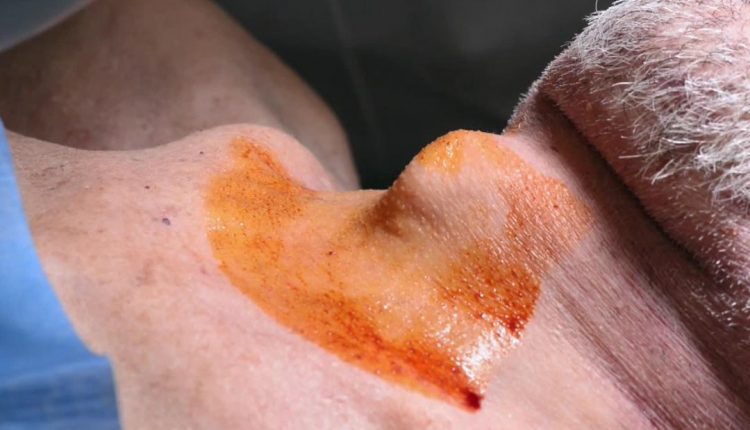
Cricothyroidotomy: urgency, complications, procedure and indications
Cricothyroidotomy in medicine refers to a surgical technique of opening the airway at the level of the cricothyroid membrane, in the anterior region of the neck, used exclusively in emergency situations such as in cases of choking or facial trauma
This operation involves cutting, with a vertical incision, the space immediately below the Adam’s apple and the space above the cricoid cartilage and, with another incision, involving the cricothyroid membrane (see image above).
Cricothyroidotomy: when is it performed?
A cricothyroidotomy is usually performed when an individual can no longer breathe adequately due to an airway obstruction.
Cricothyroidotomy in children
In children, performing an emergency tracheotomy is more complicated than in adults, since the anatomical conformation of the child’s trachea up to the age of 12 years has a much wider upper part, so foreign objects can easily pass through, while at the level of the cricoid cartilage there is an abrupt narrowing that blocks a possible foreign body; by performing a cricothyroidotomy, however, the child is saved.
In adults this does not happen because of the different anatomical conformation, so that the possible foreign body is blocked further down, perhaps at the level of a bronchus.
How it is performed
This technique involves piercing the anterior wall of the larynx at the level of the cricothyroid ligament, i.e. the membrane located in the space immediately below the Adam’s apple (thyroid cartilage) and the underlying cricoid, which is about 1.5 cm long.
This hole makes it possible to reach the inside of the larynx below the vocal fold. The cut made on the outer surface must be enlarged with another small incision involving the cricothyroid membrane, and again with a small dilator or the handle of the scalpel itself (Seldinger technique).
Another technique used is the DiGiacomo.
Immediately, a thin cannula needle is inserted (the size used is usually 15), whose task is to ventilate the patient: air must both enter and leave the two ends created.
The procedure lasts from a few seconds to about two minutes, depending on the technique used (percutaneous needle technique, microcannula insertion or mini cricothyroidotomy, emergency surgical cricothyroidotomy, etc.).
The elastic nature of the cricothyroid membrane helps prevent bleeding, which is rare, from entering the trachea.
Cricothyroidotomy: what are the risks?
This technique, especially if performed by unqualified personnel, carries certain early and late risks:
- injury to the large blood vessels in the neck;
- injury to the laryngeal nerves;
- dysphonia (paralysis of the vocal cords and difficulty in speaking);
- displacement of the trachea;
- respiratory arrest;
- site infections;
- pneumonia;
- post-obstructive pulmonary oedema;
- solid or liquid dysphagia (difficulty swallowing food).
Read Also:
Emergency Live Even More…Live: Download The New Free App Of Your Newspaper For IOS And Android
UK / Emergency Room, Paediatric Intubation: The Procedure With A Child In Serious Condition
Endotracheal Intubation In Paediatric Patients: Devices For The Supraglottic Airways
Surgical Management Of The Failed Airway: A Guide To Precutaneous Cricothyrotomy
Solving The Problem Of Delivering Oxygen During Needle Cricothyroidotomy
Updates On Rapid Sequence Intubation From Australian HEMS
Successfull Intubation Practice With Succinylcholine Versus Rocuronium: The Emergency Study
From ScanCrit: Intubation In Arrest – Again
10 Steps For Smarter Intubation
Evidence-Based Medicine – Is Cricoid Pressure In ER Rapid Sequence Intubation Really Efficient?
Intubation: Risks, Anaesthesia, Resuscitation, Throat Pain



